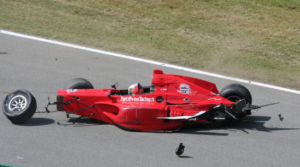 Today’s F1 races are the product of a long and layered history — especially in terms of safety. From mechanical designs to racing regulations, the sport has greatly evolved since its inception in the early 1950s, and this has generally made it better for drivers, officials, and fans alike.
Today’s F1 races are the product of a long and layered history — especially in terms of safety. From mechanical designs to racing regulations, the sport has greatly evolved since its inception in the early 1950s, and this has generally made it better for drivers, officials, and fans alike.
Here is a brief look at F1 safety’s rich past.
Early designs and ideas
F1, as a competitive sport, can be traced to 1950, the year of its inaugural season. Early F1 cars had features designed purely for speed in lieu of handling components or, disturbingly, necessary safety mechanics; they featured front engines and drum brakes and were first put on display at the 1950 Formula One World Championship, held at Silverstone in England.
Proper safety measures, such as roll bars, were not formally introduced until the early 1960s. Other emerging concepts included flag signals, fire prevention components, and interrupters for electronic systems.
The 90s and early 2000s
Flash forward to the 1990s, when many of the aforementioned safety measures continued to be tested, supplemented, and innovated as the need for such measures endured. The early 90s saw the introduction of larger rearview mirrors, mandatory detachable steering wheels, and new regulations pertaining to car width and cockpit size.
In the early 2000s, these changes were complemented with numerous shifts — some drastic — in racing rules and protocol. For instance, new time penalties were implemented to drivers triggering a false start, causing an accident or collision, or forcing another driver off the course — a move generally intended to cast a deeper negative connotation over such potentially dangerous activity.
Today
While today’s F1 cars are arguably more uncomfortable than their primitive predecessors, they are much safer — and typically not at the expense of speed or efficiency. Crashes remain a regular part of the sport, some of them overwhelming and spectacular from a viewer standpoint, but, fortunately, many of the worst crashes have not been as severe as they look. Consider a 2014 crash from driver Kimi Raikkonen, which looked potentially fatal on screen, but resulted in nothing more than a sore ankle.
This phenomenon is a direct product of modern racing safety, which itself is a product of continuous, relentless campaigning to keep the sport as safe and stable as possible. Now, cars undergo a series of dynamic, static, and load tests — all while maintaining the best aspects of the past, such as advanced fire suppression systems.